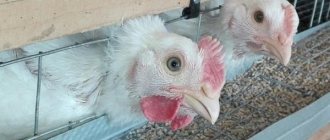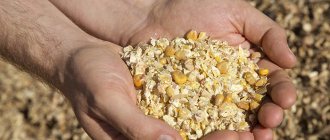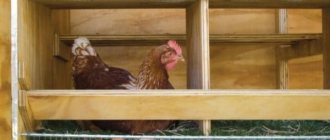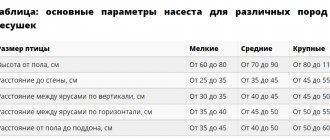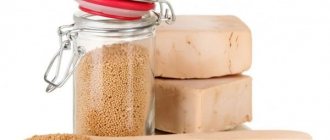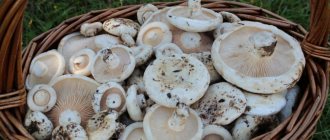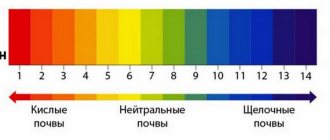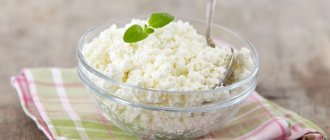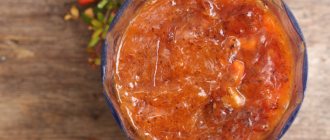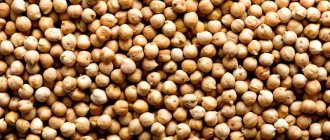Feeding hens and chicks with compound feed significantly accelerates their growth and development. The bird gains weight faster, and the egg production of laying hens increases by 15%. And with the addition of minerals and vitamins, poultry productivity increases by 25-30%. Moreover, it does not matter what kind of compound feed to feed the bird - factory-made or home-made, the main thing is that it contains everything necessary for the bird’s body.
Factory feed
Feeds of different compositions are produced for meat and egg-producing chickens. The industry produces a wide range of feed in loose, expanded and expanded-granulated form.
They are selected taking into account:
- productivity areas;
- age;
- floor.
When preparing expanded feed, short treatment at high temperature under high pressure is used. This method allows you to neutralize harmful substances, obtaining an optimal granule structure.
Complete feed can completely replace grain and become the only source of nutrition. The main thing is that the feed is used to feed the group of birds for which it is intended. Let's take a closer look at complete feeds produced by industry for chickens of different groups.
PC-0
This feed is given to broiler chickens from 1 to 14 days. This feed mixture contains substances necessary for the growth of chicks fattened for meat - minerals, trace elements, vitamins and beneficial bacteria. The composition of PC-0 is in Table 1.
Table 1
| Ingredients in PC-0 | Content, % |
| Wheat | 49,99 |
| Peas | 2 |
| Soybean full fat | 2 |
| Soybean meal | 25 |
| Sunflower meal | 2 |
| Corn gluten | 1,5 |
| Fish flour | 1,5 |
| Sunflower oil | 2,5 |
| Limestone flour | 1,57 |
| Table salt | 0,13 |
| Lysine monochlorohydrate | 0,41 |
The PK-0 feed also contains antioxidants, enzymes, and a vitamin and mineral premix.
Caloric content of 100 g of PC-0 – 300 kcal. Proteins make up 21% of the total feed mass.
PC-0 contains sodium lasalocid. It is added to the feed for preventive purposes - to prevent coccidiosis.
PC-1
Compound feed PK-1 is intended for laying hens from one year old. This is a highly nutritious complete feed enriched with vitamins and minerals.
The composition of feed PK-1 is in Table 2.
table 2
| Ingredients in PC-1 | Content, % |
| Wheat | 62,5 |
| Meat and bone meal | 4 |
| Sunflower oil | 2,3 |
| Feed yeast | 2,5 |
| Baking soda | 0,07 |
| Table salt | 0,1 |
| Tricalcium phosphate | 1,95 |
| Limestone flour | 7,5 |
| Sunflower meal | 17,5 |
| L-threonine 98% | 0,118 |
| L-lysine monochlorohydrate | 0,301 |
| DL-methionine 98.5% | 0,1 |
| Holi chloride B4 | 0,06 |
| Premix P1-2 | 1,0 |
The energy value of 100 g of PC-1 is 269 kcal. Protein makes up 16% of the total feed mass.
According to GOST, mixed feed for laying hens should include, along with corn grain, wheat and other feed ingredients, yeast, vitamins, minerals, antioxidants, prebiotics, amino acids, antibacterial drugs, mold inhibitors.
PC-1 can be purchased in 40 kg bags. The price of one bag is 850 rubles. One laying hen should receive 120 g of feed daily. Feed mills also produce several subspecies of PC-1, designed for a certain age of laying hens, for example:
- PC 1-18 – complete feed for laying hens 1-2 months old.
- PK-1-1 – for laying hens after 48 weeks. Positively affects the taste and quality of eggs. The yolk of the eggs becomes bright orange, the shell becomes harder, and the chicken fluff thickens.
- PC-1-25 – after 48 weeks. This is a balanced food that contains prebiotics, enzymes, antioxidants and a coccidiostat.
If the feed label contains the abbreviation “KK”, this means that the feed is concentrated - it should be added to the main diet, and not used as a separate feed. KK consists mainly of wheat bran, to which fishmeal, cake, shell, limestone and barley waste have been added.
An excess of protein, as well as its deficiency, leads to a deterioration in the egg production of chickens.
PC-2
PK-2 – compound feed for young eggs. Give to chicks aged from 1 to 8 weeks. The food contains medications in prophylactic doses. The composition of PK-2 feed is in Table 3.
Table 3
| Ingredients in PC-2 | Content, % |
| Corn | 48,2 |
| Wheat | 20,3 |
| Soybean cake | 12,8 |
| Fish flour | 1 |
| Sunflower cake | 12,8 |
| Table salt | 0,3 |
| Chalk | 2,2 |
| Methionine | 0,1 |
| Lysine | 0,1 |
| Premix | 1 |
| Monocalcium phosphate | 1,2 |
Available in the form of small cereals or granules. The cost of one kg is about 25 rubles. Dosage - according to the instructions, selected according to age. 100 g – 290 kcal. Protein makes up 18% of the total feed mass.
PK-3
PK-3 – feed for egg-laying chickens. Give from the 7th week to 3.5 months. It is given at the age of 4.5-5 months. But in the period from 3.5-4.5 months, chickens are fed PK-4 food. The composition of PK-3 feed is in Table 4.
Table 4
| Ingredients in PC-3 | Content, % |
| Corn | 35 |
| Wheat | 30,2 |
| Soybean cake | 2 |
| Soya extruded | 8,4 |
| Sunflower cake | 19,5 |
| Table salt | 0,3 |
| Chalk | 2,4 |
| Monocalcium phosphate | 1 |
| Lysine | 0,2 |
| Premix | 1 |
100 g – 260 kcal. Protein makes up 16% of the total feed mass. A bag weighing 25 kg costs about 600 rubles. The dosage is indicated in the instructions.
PK-7 – food for crosses, 18-22 weeks old. It is not easy to buy such feed; it is usually made to order. And this is not all the feed for laying hens, chickens and roosters that are produced in feed factories.
Advantages and disadvantages of industrially produced compound feeds
Thanks to compound feeds, it is possible to achieve high egg and meat productivity, spending a minimum of money and time. The composition of the combined feed includes grain, vegetables, cake, vitamin and mineral supplements. Chickens kept in captivity and without access to natural feed prefer grain mixtures, but compound feed has important advantages:
- completeness - the feed contains everything necessary for bird nutrition;
- efficiency;
- you can change the composition.
Along with industrial feed, you can use homemade feed - this is a more economical option, but it requires a lot of time.
Advantages and disadvantages of compound feeds
We recommend reading our other articles
- When to dig up daffodils
- Zinnia flower
- Bee pollen
- Temperature conditions for incubating quail eggs at home
Modern types of feed have many advantages.
- The combined mixture is easy to store; it does not require special conditions, the main thing is that the room is dry.
- The use of mixed feed saves breeders time on preparing dry and wet mash.
- Chickens eat high-quality food with pleasure. It increases their immunity, endurance, and quickly saturates them.
- When feeding chickens with mixed feed, egg production increases.
- With regular use of feed, it pays for itself. The reason is that the food does not spoil, and that the productivity of birds increases.
Important!
Compound feed for laying hens has a balanced composition, therefore, when consuming this feed, chickens lay high-quality eggs, with a strong shell, very tasty and nutritious.
Combined mixtures also have disadvantages.
- Cheap types of feed for laying hens do not provide much benefit. Chickens gain weight quickly on them, but they contain little nutritional value.
- High-quality feed cannot be cheap.
When feeding chickens with compound feed, egg production increases
Main components of feed
One of the factors on which the health and productivity of chickens depends is a well-balanced diet. Chicken feed must contain all the substances necessary for the body in appropriate proportions. There are dozens of feeds offered on the market; the farmer’s task is to choose an option taking into account his budget, the age of the bird and its purpose. Feed for broilers is designed for rapid weight gain, for laying hens - to increase egg production.
Read more about proper feeding of laying hens here.
All chicken feeds, according to their composition, are divided into three groups:
- Carbohydrates . Promotes bird growth. It usually contains grains and vegetables.
- Protein. Lots of fats - vegetable and animal. Promotes egg production.
- Vitamin. Helps you survive the winter. Supports immunity.
Let's take a closer look at each group of feeds, their features and composition.
Vitamin feed
Grain and protein supplements contain many vitamins and mineral compounds, but sometimes this is not enough for birds, especially in winter. When the growth of broilers slows down or the frequency of egg laying in laying hens decreases, their diet should be diversified with vitamin feed.
For egg-laying birds, such feeding consists of concentrated vitamins purchased at veterinary pharmacies or specialized stores.
The dosage is calculated according to the instructions. In the case of broilers, experienced breeders advise resorting to ready-made yeast feed or an independent procedure for yeasting the feed.
Carbohydrate feed
Carbohydrates are the main source of energy for birds. Chickens digest food high in carbohydrates very well. Their main feature is a slowdown in metabolism. This is exactly what you need for increased weight gain. Therefore, such feed is given to broilers, from which one thing is required - to grow as quickly as possible.
Carbohydrate feeds are divided into:
- cereals;
- juicy;
- grain waste.
Cereals
Grain should make up more than 50% of the chicken diet. The bird easily digests grain of any grinding. Grain composition:
- starch – 70%;
- protein – 8-12%;
- minerals – 1.5-5%%;
- fat – 8-10%.
Cereal proteins contain few amino acids, and grains contain fiber, which is poorly absorbed by the chicken body.
Cereals for carbohydrate feed:
- Corn. In carbohydrate feeds, the most useful and valuable component is corn grains. They contain less fiber than other grains. For example, oats contain six times more fiber than corn. In terms of protein content, corn is the leader among grains.
- Oats. It is given to chickens after removing the films. For each age there is a certain size of fractions. If a bird is given oatmeal, it must be sifted to separate the shells of the grains. Oats contain a lot of amino acids and are considered dietary. But since it contains a lot of fiber, you should not give it to your bird too much. If oats are sprouted before feeding, they will become much more nutritious. Fiber in large quantities is dangerous for poultry. It is slowly digested, which leads to intestinal blockage and death of chickens. The share of crushed oats should not exceed 20% of the total mass of feed.
- Wheat. Feed wheat is also often included in carbohydrate feed - it contains a lot of vitamins B and E. Wheat in the feed should not exceed 30%.
- Rye. Its presence in feed is undesirable - at least, this is what experienced poultry farmers and feed manufacturers think. And freshly harvested rye should not be given to poultry at all - it contains a lot of mucus, which is harmful to the digestive system of chickens.
- Barley. It is added in purified and sifted form. The husk of barley contains fiber.
- Buckwheat. It is rarely used in chicken nutrition. It is not very suitable for chickens as food, and they eat it without much desire.
The energy value of grain crops is in Table 5.
Table 5
| Products | proteins, % | fats, % | carbohydrates, % | kcal/100 g |
| corn | 8,3 | 4,2 | 63,6 | 334 |
| durum wheat | 11,4 | 1,7 | 62,4 | 318 |
| soft wheat | 9,7 | 1,5 | 63,1 | 312 |
| rye | 9 | 1,5 | 64,6 | 316 |
| barley | 9,5 | 1,5 | 72 | 348 |
| peas | 19,3 | 2,2 | 49,8 | 304 |
| beans | 19,2 | 1,9 | 50,3 | 303 |
| lentils | 20 | 1,6 | 49,8 | 30 |
| soya beans | 28,1 | 17 | 23 | 368 |
| oats | 10,8 | 6 | 61,1 | 351 |
Juicy feed
Peeled vegetables serve as succulent feed for chickens:
- Potato . Good for digestion. You should not give green potatoes - they are full of solanine, it is poison. It is also not recommended to give raw potatoes. The best option is boiled potatoes, dehydrated and chopped.
- Beet. Good for digestion. Give boiled or fresh pureed. The diet can contain up to 15% beets. Keep it frozen. When it thaws, it is immediately given to the chickens.
- Pumpkin. It contains a lot of vitamin B2, sugar, carotene. Give crushed - no more than 15% of the total feed volume.
The energy value of succulent feed is in Table 6.
Table 6
| Juicy food | water, g | proteins g | fats, g | carbohydrates, g | kcal |
| potato | 78,6 | 2 | 0,4 | 19,7 | 83 |
| beet | 86,5 | 1,7 | 0,1 | 10,8 | 48 |
| turnip | 91,4 | 1,2 | 0,2 | 3,4 | 31 |
| pumpkin | 91,8 | 1 | 0,1 | 4,4 | 22 |
Grain waste
Waste from grain processing is rarely used in the preparation of feed. The most common type of grain waste is wheat bran. These supplements have a serious drawback - they contain fiber, phosphorus, plant components, and fungi. Their nutritional value is low; there is no particular benefit from them either for weight gain or for increasing egg production.
Sometimes alcohol production waste – “stillage” – is added to animal feed. This is the name given to the grounds that remain during the distillation of alcohol - potato, wheat, corn. The most nutritious stillage is made from wheat. It can be introduced into the diet of chickens in the amount of 10% of the feed volume. It is not inferior in nutritional value to oats and contains a lot of vitamin B.
Food production waste – molasses – is also added to the feed. This product is obtained by boiling beet juice. The additive rate is up to 7%.
Types of feed for laying hens
First of all, before starting to compile a daily diet, it is necessary to determine what types of feed are used in poultry farming. You should also choose the most suitable ones in each individual case.
Dry grain mixtures granulated
The category of dry feed for chickens consists of combined small granules, concentrates, hay, grain mixtures, meal, bran, cake, as well as specialized additives. As a rule, such products do not require mandatory soaking and are served mixed or separately. Dry food is often used to replace greens that are unavailable during the winter.
The basis of the diet of laying hens is often made directly from grain mixtures (wheat, oats, corn) and concentrates. However, in such cases they require mandatory supplementation with herbs, vegetables, and animal products.
Wet
Wet feed for laying hens should be understood as mash made from bran and mixed feed. They add vegetables (including boiled root vegetables), vitamin and mineral premixes, chalk, meat and bone and fish meal, and pine needles. This type of feed is rarely used as the basis of a bird’s diet, since it is beneficial only as a supplement to the main food.
Feed and bran for mash are brewed or soaked in clean water, broths, decoctions, and fermented milk products.
Before feeding, make sure that the mash has cooled down. To do this, lower your palm to the very bottom and mix the product thoroughly.
Combined: tables with proportions
There are three main types of feed and concentrates for laying hens:
- Protein. As the name suggests, the products are made on the basis of high-protein plant components: legumes, yeast, herbs.
- Carbohydrates. The basis, as a rule, consists of grain crops (wheat, oats, millet), bran and flour products.
- Vitamin. They contain large quantities of vitamin and mineral premixes, extracts from vegetables and herbs, pine needles, and tops.
Read how to germinate wheat for chickens here.
With this feeding, each adult chicken is supposed to consume up to one hundred and fifty grams of product per day. However, the average amount depends on the age and size of the hen. You can also purchase and serve feed mixtures for chickens separately. They are recommended to be given from the fifth day from the moment of hatching.
Protein feed
Chickens, eating food that contains a lot of protein, grow quickly, laying hens lay eggs better, and the quality of their egg whites increases.
Source of proteins:
- ground fish;
- meat flour;
- peas and other legumes;
- cake
For chickens to be healthy, they need protein feed - it contains amino acids, which their body cannot do without. There are two types of proteins - animal and plant.
Animal proteins
Animal proteins contain much more minerals and vitamins than plant proteins. Types of protein products:
- Fish flour. It is made by grinding fish that is not suitable for food, as well as fish waste. The protein contained in fish is perfectly digestible by chickens and contains a lot of important amino acids. Fishmeal can account for 8% of the diet. It is used more often in wet mash.
- Bone flour. This is the second most popular protein product. It is ground from meat and bones. It contains approximately the same amount of protein as grain crops, and its fat content is 11%. There are vitamins A and E. Bone meal is given to birds from the age of one month.
- Blood meal. The raw materials are blood and bones. It contains concentrated protein and amino acids. Give no more than 4% of the diet to avoid indigestion.
- Feather flour. Cheap, but of little use. Raw materials: bird down and feathers. In the diet - up to 2%.
- Dairy products. Highly digestible, protein-rich foods. The use of milk, cottage cheese, skim milk and whey in wet mashes promotes the growth of chickens and egg production.
- Earthworms . Farmers give them to chickens as a powerful protein supplement. The norm is 5-7 g per chicken. Worms can be raised in a container filled with rotting food and weeds.
When fattening broilers, fishmeal is not included in the diet so that its smell does not accompany chicken meat.
Plant proteins
Source of vegetable proteins - legume grains:
- Soy. It is distinguished by a high content of proteins, amino acids, vitamins and minerals - soybeans contain no less of them than animal proteins.
- Peas. Contains many proteins and amino acids. Chickens do not really like crushed peas - they have a specific taste and smell, but, nevertheless, they are added to feed, but not more than 10%.
- Meal and cake. Most often, soybean and sunflower meal or cake are used. The rate of additive in the feed composition for adult chickens is 15-17%, for young animals – 10%.
Pros and cons of using compound feeds
High quality feed is produced at the factory, in accordance with GOST. The use of special equipment allows you to achieve a balance of all nutrients.
Advantages of use:
- Increases resistance to infectious diseases
- Bone tissue is strengthened, which has a good effect on the quality of poultry meat and the formation of eggs.
- The incidence of digestive tract morbidity and sudden death is reduced.
- The mixtures contain phosphorus and calcium, this prevents the development of rickets.
- Sodium and calcium form a strong shell.
Recently, experiments have been carried out at different poultry farms on feeding birds with different feeds. According to reliable information, the productivity of laying hens fed with pellet feed in almost a year amounted to 250 eggs, compared to 241 eggs for hens fed in bulk. The weight in grams of each egg was about 63 grams; up to 150 grams of feed were consumed per day. The weight of the chicken increased from 1653 to 2306 grams (fed with pellets), from 1703 to 1885 g (loose feed was used). The optimal ratio of pellet feed to flour is ½.
When consuming mixed feed, some chickens had the highest egg production rates and low feed costs.
Not all manufacturers monitor the quality of their products, and some deliberately make them completely useless. During production, proteins and amino acids are replaced with artificial analogues, which affects the birds’ digestion and weight loss. Because of this, farmers prefer to make their own feed.
If home-made food is selected correctly, chickens do not have problems with productivity. In cases of low egg production, feeding needs to be changed.
Mixed feed
Mixed feed is a compound feed that contains carbohydrates, protein and other feeds in different proportions. You can make them yourself by mixing the necessary ingredients. Based on the characteristics of the bird, the composition and percentage of feed are determined. If necessary, the ingredients are boiled, crushed or otherwise processed.
Home-made dry mixed feed can be prepared in advance; wet feed is prepared immediately before feeding the chickens. Chickens especially like warm food - you can warm it up.
In feed for laying hens, protein is set at a level of 15-20%, fiber - 6%. Mixed food prepared in such proportions will not lead to excess weight gain. The feed rate for adult chickens is 75-150 g. The optimal rate is 120 g.
When preparing or buying a combination feed, study its composition in advance, try a small amount of it - there are additives to which chickens react poorly. If you cannot find suitable food, you can always prepare it yourself.
Yeasting of feed
Baker's yeast contains vitamins A, E, D, as well as a group of B vitamins; it is enriched with iron and phosphorus, is well absorbed, and therefore is an ideal ingredient for increasing the nutritional value of feed.
When adding nutritional yeast to finished feed, several important conditions must be taken into account:
- The procedure is carried out with mixtures in which the amount of animal proteins is 15% or less.
- If the food contains table salt, food chalk and crushed shell rock, then yeasting is not recommended.
- To accelerate the growth of yeast cells, malted barley is added to the feed.
- The finished feed is fed to chickens no more than 2-3 hours after preparation, otherwise it may turn sour.
Yeasting occurs in several stages.
Yeast preparation
850 ml of warm water up to 40 degrees is poured into the container and 100 g of baker's yeast is added to it. The resulting solution is stirred vigorously until all lumps dissolve.
Introduction of additives
The finished food will be more nutritious if you enrich the solution with additives. To do this, you can use grated sugar beets - 400-600 g, yogurt - 100 ml or sprouted barley 250-450 g.
If you don’t have any of this on your farm, then you can skip the second stage.
Introduction of compound feed
Add the yeast solution to a container with 15-19 liters of water at room temperature and mix vigorously until smooth. Then 10 kg of feed is poured into the same container and mixed again.
Excerpt
The finished mixture is placed in a dark, warm place for 5-9 hours, stirring occasionally, after which it is given to the chickens according to the diet.
Choosing feed for chicken is an important task that the poultry farmer must cope with “excellently”, because the strength of the bird’s immunity, productivity and well-being largely depend on the bird’s diet.
When preparing the mixture with your own hands, only fresh, high-quality products are used so that the finished food turns out healthy and nutritious.
Feed for chickens
Compound feed is produced taking into account the orientation of the chickens. Complete feeds have been developed for egg-laying chickens:
- “Solnyshko” and PK-2 – they are given from the first days of life. PK-2 can be given for up to 7 weeks. The feed is finely ground - in the form of cereals or granules.
- PC-3 – given after 7 weeks to 3.5 months.
Chickens of meat breeds are given feed PK-5. The feeding period is determined taking into account the feeding system. The food is made in the form of small cereals - it is convenient for babies to peck. PK-5 contains active components that promote weight gain.
Feed for chickens, as well as for adult chickens, can be prepared independently. The starting mixture should contain the following ingredients:
- corn – 49%;
- sunflower cake/meal – 18%;
- wheat – 12%;
- fish/meat and bone meal – 8%;
- return – 3%;
- plant components – 3%;
- feed fat – 1%.
The ingredients are first crushed and only then mixed. You need to add to the feed those ingredients that have already been introduced into the chickens’ diet so that there are no digestive problems.
Broiler chickens can be given dry food from the first days of life, and laying chicks - only after the first week.
Chicks are not given food in granules - they will not be able to crush and swallow them. Before giving granulated feed, it is necessary to grind it.
Feed composition
The composition of feed for egg breeds of chickens of different ages differs in the amount of different ingredients included in their composition.
The main ingredients included in the feed:
- corn;
- wheat;
- monocalcium phosphate;
- soybean cake;
- baking soda;
- lime flour;
- salt;
- sunflower oil;
- chalk;
- extrud. soy;
- fish meal;
- sunflower cake;
- methionine;
- feed yeast;
- lysine;
- different types of premixes.
But it should be noted that the basis of all types of feed are grain crops such as corn and wheat. This or that component introduced into this food for chickens depends on the specific feed manufacturer.
These grain crops provide the daily requirement of poultry for protein of plant origin.
But there is no norm for a specific amount of food in the morning and evening for poultry, since each breed has its own required dose of food.
Typically, experienced breeders recommend focusing on the time during which chickens eat their morning or evening portion of feed. If the eating rate is about 1/3 of an hour, then little food was put in the feeder. And if after 2/3 hours there is still feed left in the feeder, then the chickens were given too much food.
But this method of checking nutrition standards is quite relative. It is very difficult to check that all chickens are getting the required amount of nutrients. Very often, more active and aggressive chickens push the young away from the feeder and eat more feed than less active chickens. As a result, one part of the herd will constantly overeat, while the other will not have enough feed. The best thing in this case would be to divide the flock so that the more active part of the chickens and the young animals feed separately from each other.
Birds older than six months should eat no more than 120 g of feed per day. This amount of food will be sufficient for the laying hen and will not cause excess weight gain to the detriment of egg production.
Feed consumption standards
Overfeeding and underfeeding birds are equally harmful. Every chicken owner should know the feed consumption rates depending on the age of the bird. Feed standards for chickens and laying hens are in Table 7.
Talitsa 7
| Age, weeks | Daily feed intake, g | Total feed for the period, kg |
| 1-3 | 10-26 | 0,4 |
| 4-8 | 31-51 | 1,3 |
| 9-16 | 51-71 | 2,2 |
| 7-20 | 72-93 | 3,5 |
| 21-27 | 100-110 | 5,7 |
| 28-45 | 110-120 | 15 |
| 46-65 | 120 | 17 |
The above doses correspond to feeds designed for certain periods of life (PC-1, PC-2, PC-3). When making homemade feed, nutritional standards are established experimentally.
Broilers are fed successively with three types of feed:
- “Start” or PK-5 - it is given from the first day until 14-15 days or up to 30-31 days, depending on the chosen feeding system.
- “Growth” – given at 3-4 weeks of life.
- “Finish” – from one month of age until slaughter.
Feeding standards for broilers for a system in which only starting and finishing feed mixtures are used are in Table 8.
Table 8
| Feeding standards for one individual | PK-5-3 | PK-5-4 | PK-6-6 | PK-6-7 |
| age | ||||
| 0-5 | 6-18 | 19-37 | 38-42 | |
| daily, g | 15-21 | 25-89 | 93-158 | 160-169 |
| for the entire period, g | 100 | 760 | 2410 | 830 |
How to prepare compound feed yourself?
There are situations when preparing compound feed with your own hands turns out to be more profitable. The main thing is to have all the necessary ingredients from which the food will be prepared on hand. The second important point is strict adherence to the recipe. You need to use all the ingredients specified in the recipes in the exact dosage.
Depending on the age of the chickens, the size of the pellets is determined. The composition and proportions depend on the age of the chickens and the orientation of the breeds. Let's look at a few popular recipes.
Recipe No. 1
To prepare feed for laying hens, you need to mix the following components:
- corn grains – 500 g;
- wheat – 100-150 g;
- Peeled sunflower meal – 80-100 g;
- washed finely crushed barley – 80-100 g;
- bone and fish meal - 70 g each;
- yeast – 60 g;
- herbal flour – 60 g;
- crushed pea grains – 30 g;
- salt – 2 g.
When all the ingredients are thoroughly mixed, concentrated vitamins can be added to the mixture. Vitamins that increase egg production in chickens are discussed here.
Recipe No. 2
This is a simple recipe that doesn't require much effort. This mixed feed is suitable for chickens from 15 to 45 weeks. The quantity of products can be adjusted depending on weight indicators.
The food contains:
- wheat grains – 400-500 g (1/2 of the total volume);
- wheat bran – 40-80 g;
- vegetable oil – 15-30 g;
- meat flour – 30-70 g;
- chalk – 25-30 g;
- barley grains – 100-200 g;
- shell – 50-80 g;
- salt – up to 3 g.
Recipe No. 3
This is a recipe for preparing finishing feed for broilers; it is not given to egg crosses. Composition and proportions:
- corn flour – 500 g;
- cake – 170 g;
- ground wheat – 120 g;
- meat and bone flour – 120 g;
- feed yeast – 60 g;
- premix – 15 g;
- herbal flour – 12 g;
- salt – 3 g.
This mixture has great energy value; it ensures weight gain in boilers after the 30th day.
Rule two: balanced feed for chickens and an economically justified daily ration
The cost-effective keeping of chickens for eggs depends on the quality of the balanced feed and its daily consumption. It is the financial costs of purchasing and preparing feed that ultimately affect the payback and profitability of maintaining a poultry house with laying hens.
Experienced farmers find the optimal ratio of feed, including proteins, carbohydrates, fats, microelements and vitamins necessary for birds. Only balanced feed for laying hens allows you to get the largest number of eggs from one individual. The absence or even insufficient quantity of at least one nutrient invariably affects the egg production of chickens - the number of eggs decreases, their size decreases, and taste deteriorates.
From the experience of farmers, it has been noted that if a chicken is not fed correctly, about 500 g of grain per day is spent on its maintenance, and if it is fed correctly, no more than 250 g. Moreover, the productivity of such laying hens is approximately the same and averages 100 eggs per year. It is absolutely clear that the second option is much more profitable and effective at lower costs, and the resulting eggs are tastier and healthier.
All food is divided into several types:
- Wet mash.
Their composition varies depending on the time of year and the availability of ingredients. Usually these are boiled potatoes and carrots, grated fodder or sugar beets, zucchini or pumpkins with the addition of crushed grains, fresh chopped grass, bran, food leftovers, etc. The main thing when preparing mash is to try to make them moist and crumbly, but in no case not sticky, as this consistency can clog the airways of birds.
- Whole grain.
This dry food for chickens is very convenient to use, as it does not freeze in winter and does not disappear on hot summer days. Cereal seeds also contain a large amount of nutritional elements, high in calories and useful. The use of grain helps to fully diversify the diet and quickly resolve the issue of what to feed laying hens. By alternating between feeding crushed corn, oats, barley, wheat and millet, you will provide your chickens with adequate nutrition. Just don’t mix all the grains at once in one feeder, because the tastiest ones will be eaten first, and the rest will just be scattered.
In winter, sprouted grains will be an additional source of vitamins for laying hens. It is quite simple to prepare: the grains are soaked in warm water and, after swelling, scattered in a thin layer in a heated room with an air temperature of about 25 degrees. By maintaining the necessary humidity, within three to four days you will receive hatched grains, which are fed to the chickens.
- Minerals.
Ready-made feed for laying hens, as a rule, is already enriched with essential microelements. But, if the amount of feed in the diet is limited or if you do without it at all, then be sure to provide a separate feeder with natural mineral supplements or include them in the mash. River shells, pieces of chalk, sand or fine gravel, eggshells, bone meal or ash, charcoal - all these products contain substances necessary for the health and productivity of laying hens. In addition to them, the chickens’ diet includes a minimum amount of regular table salt (half a gram is enough for each). But, if your laying hens receive a lot of food waste from your table, then you should not give additional salt.
Feed preparation options
There is a direct connection between the digestibility and palatability of feed and its physical form. In order for chickens to like feed and digest it well, they need to be prepared correctly. Small fractions mean not only ease of packaging, but also ease of eating the food.
The size of the fractions should correspond to the age of the chickens and the properties of the ingredients used. So, for example, wheat cannot be ground into flour - it will turn into a lump that will simply get stuck in the esophagus. Each ingredient must be prepared correctly. The feed is also subjected to biological preparation, which improves the taste of the feed. At the same time, carbohydrates are broken down so that the food is successfully digested.
Yeasting
Yeast contains proteins, proteins, vitamins A, B, E and D, iron and phosphorus. Yeasting is the introduction of yeast into food - grain, juicy or vitamin.
Features of yeast:
- It is better to add yeast to feed with sugar beets or molasses - they contain a lot of sugar.
- To make the yeast multiply faster, you can add malted barley.
- You can yeast any food to increase its nutritional value.
- The food should not contain more than 15% protein.
- Salt, shells and chalk are undesirable in the feed - they inhibit the growth of yeast.
- The feed temperature should be between 24-27 °C and the air temperature between 15-27 °C.
Step-by-step instructions for yeasting 100 kg of feed:
- Baker's yeast is added to 10 liters of warm water. Yeast is taken in accordance with the proportion of 1 kg per 100 kg of feed.
- After stirring the yeast mixture until bubbles appear, add sugar beets (4-6 kg) and sprouted barley (3-4 kg), or pour in 1 liter of sour milk.
- The resulting mixture is poured into water - 150-200 liters. It should be warm. Mix everything again.
- Add 100 kg of feed. Wait 6-9 hours - while yeast is in progress.
The resulting feed should be fed to the chickens for 2-3 hours. After this period, the feed will begin to sour, a fungus will appear in it - it will become unsuitable for feeding the birds.
Malting
Thanks to malting, the taste of the feed is improved. This process transforms some starch into sugar, giving the food a sweetish taste. Only the grain components of the mixture are subjected to malting, so it makes no sense to process full-fledged feed with premixes and meat and bone meal - many useful substances will simply evaporate when heated.
Cooling process:
- Ground grain is poured into the container. Pour boiling water over the dirt - its temperature should be +90...+95°C. For 1 kg of derti take 2 liters of water.
- The steamed shit is covered with a lid and placed in a warm place for 4 hours. If the temperature inside the pan drops too much, the melting will slow down.
- To speed up the process, add 1-2 g of malt per 1 kg of feed to the mixture.
Ensilage
This process is similar to sauerkraut. The cut grass is thrown into a silage pit, and there it is exposed to lactic acid bacteria. The created acidic environment preserves the green mass.
Suitable for silage:
- alfalfa;
- oat shoots;
- clover;
- the above-ground part of the pea.
1 kg of silage contains protein - 10-30 g and carotene - 5% by weight, a lot of vitamin C, and organic acids. Ensiled grass is nutritious and improves digestion, preventing putrefactive processes.
Grinding
Mechanical preparation of feed does not affect digestibility, but speeds up and simplifies the digestion process - this increases its nutritional value. The grain is covered with a coating that makes digestion difficult. Thanks to chopping, the chicken spends less energy digesting feed.
The size of the fractions depends on:
- grains - the harder it is, the more it is crushed;
- the age of the chickens - the younger they are, the smaller the fractions.
Granulation
The granulation process is aimed at obtaining convenient, small-sized fractions. The granules are smooth, the feeders into which they are poured remain clean. In loose feed, chickens can choose what they like, but in granulated feed there is no choice - they eat a full range of useful substances.
When pelleting, the feed is heated, so it is better digested. But there is also a minus - due to the effects of temperature, you have to sacrifice some of the vitamins.
Mixing
Chickens need to get all the healthy ingredients along with the food, so they are mixed thoroughly. All components must have the same fraction sizes. When the feed is not mixed enough, some chickens will receive an increased dosage of premix, while others may be left without it altogether.
When mixing feed components, water or whey is poured into the mixture - this allows fractions of different sizes to be connected to each other. Mixing increases the efficiency of feed.
In order to achieve your goals when breeding chickens - high meat and egg productivity, you need to use feed that corresponds to the age of the chickens and the orientation of the breed. By properly preparing the feed, you can significantly increase its effectiveness, nutritional value and digestibility.
1
0
Copy link
Compound feed for broilers
Broilers are less active, so they require less carbohydrates.
In this case, accelerated weight gain should be supported by food enriched with protein. This means that the feed should consist of a reduced amount of wheat and an increased content of legumes. Calculation of feed ingredients for meat chickens is carried out as follows:
- 25% each of wheat and barley;
- 20% each of corn and soybeans;
- 10% peas;
- 5% sunflower cake or meal.
As additional additives, food chalk, fish or meat and bone meal, vitamins and herbs are introduced into the chicken diet.
If this is not enough for normal growth and weight gain, then the feed is subjected to the yeast process.
